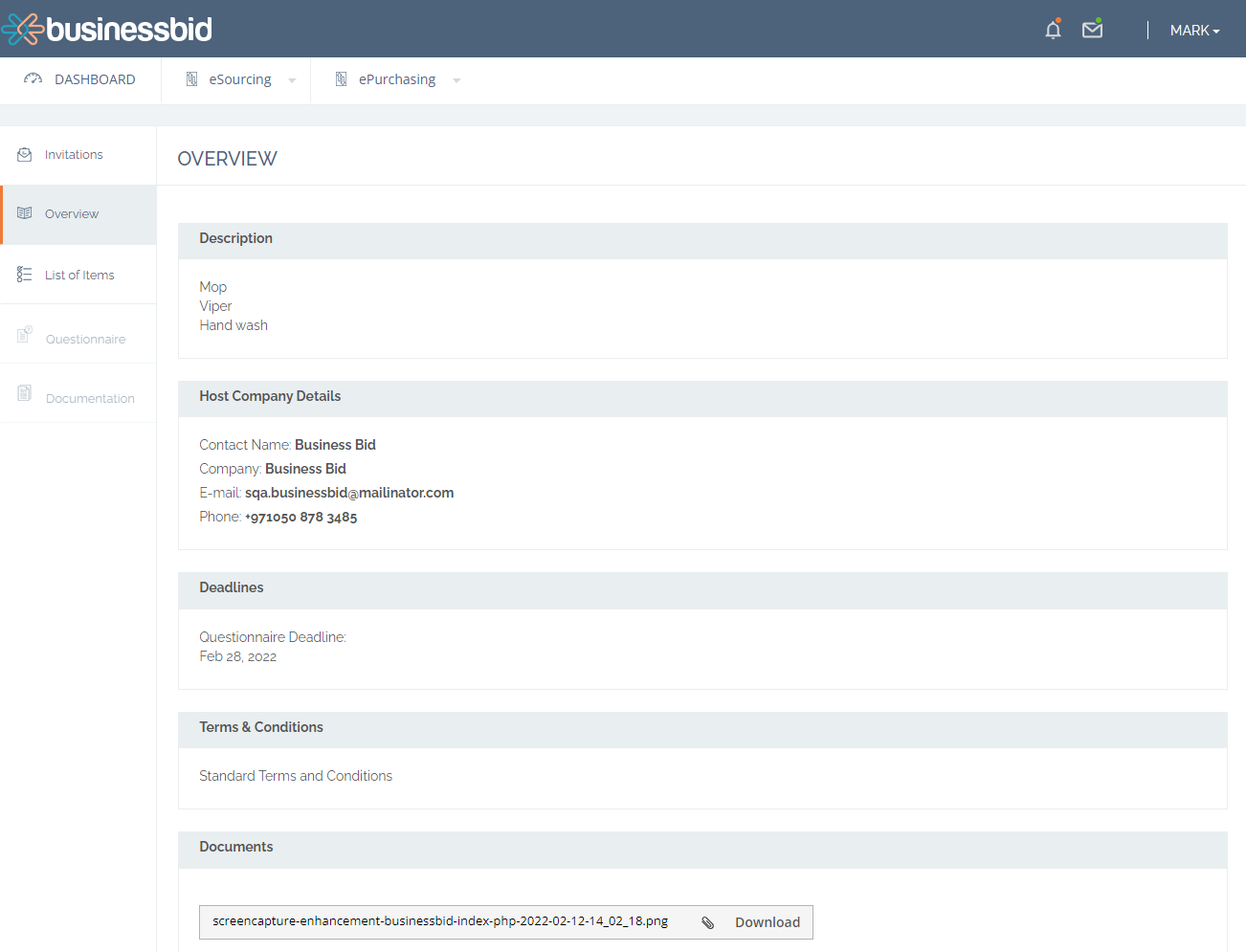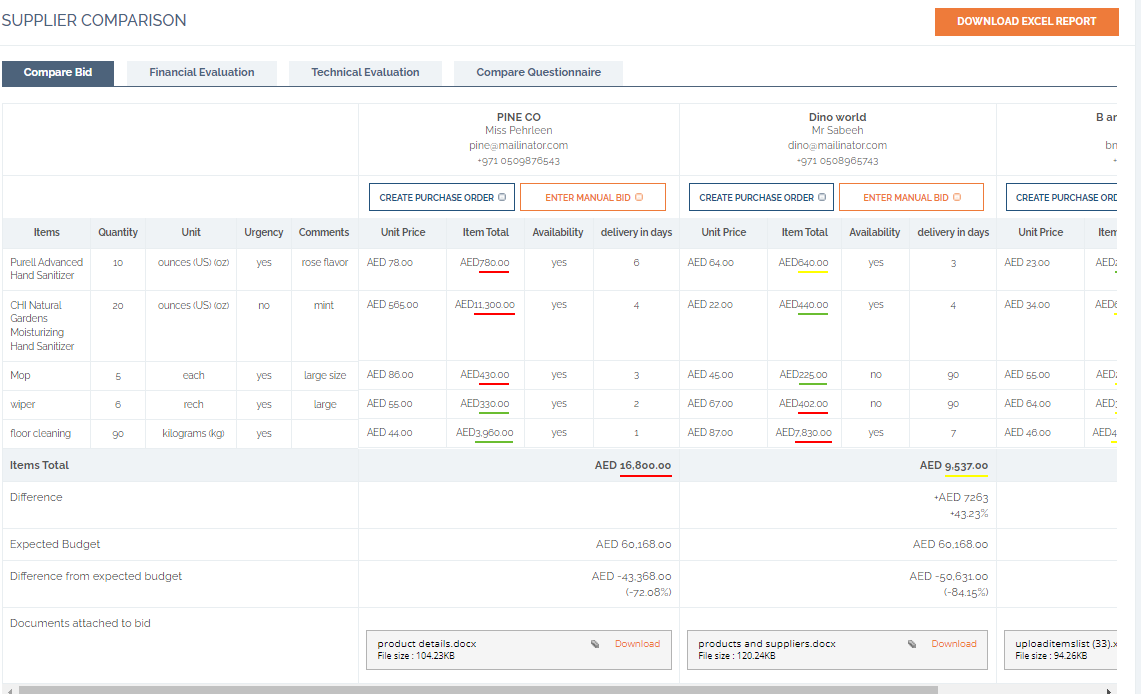A request for quote (RFQ), otherwise called an invitation for bid (IFB), is an interaction where an organization requests to select providers and workers for hire to sub mit value statements and offers the opportunity to satisfy specific assignments or undertakings. The RFQ cycle is particularly vital to organizations that need a steady stockpile of a particular number of standard items. Organizations might send RFQs alone or before a Request for proposals (RFP).t gotten the expected advantages from e-obtainment speculation.
An RFQ is typically the initial phase in presenting a request for proposal (RFP). These two records are comparable as they give subtleties of the undertaking or administrations required, however RFQs by and large request a more extensive cost statement. Additionally, organizations for the most part plan RFQs for nonexclusive items, in which the amount required is known, and RFPs are interesting, specialty projects where amounts and particulars are obscure.
• An RFQ is a business interaction wherein a business requests statements from select providers and workers for hire for a particular assignment or venture.
• An RFQ can be sent alone or paired with a Request for proposal (RFP).
• A business by and large sends an RFQ when the amount for a standard item is known and needs are progressing.
• RFQs don't produce spontaneous offers and statements as organizations target explicit sellers and project workers.
• As well as valuing, RFQs might incorporate subtleties, for example, installment terms, factors that could impact an organization's offered determination, accommodation cutoff time, and such. An administration, organization that needs to purchase 500 PCs with a particular hard drive size and handling speed, for instance, would send an RFQ to a few sellers as planned bidders.
• Since the RFQ design is uniform inside a given organization when the RFQs return cost statements, the requesting organization might think about them without any problem. Regularly, an RFQ interaction comprises four segments: the arrangement stage, the handling stage, the granting stage, and the end-stage. The organization and large will grant the agreement with the merchant that meets the base, passes models, and presents the most reduced bid.
RFQs are not public declarations. Since the requesting organization sends RFQs just to organizations that it trusts, it doesn't have to plan extended obtainment documentation. Likewise, dissimilar to a public sale, an organization can get back just the quantity of offers that it's mentioned, which additionally saves time.
Utilizing an RFQ lessens how much time is expected to acquire labor and products. It likewise offers a level of safety as an organization will get offers just from sellers it likes. Then again, in light of the fact that RFQs decrease how much contest, an organization might miss getting the least accessible cost or finding out about new top-notch sellers.
Whenever an organization gets a statement in light of an RFQ, it's anything but a proposition nor an official agreement. The specialist will extend the employment opportunity to its picked merchant by sending it a buy request, which, basically, is an agreement indicating the agreements of the work. At the point when a merchant acknowledges and signs the buyer's request, the agreement starts.
A very much built RFQ ought to open with a prologue to the organization and its business and an assertion of the need. It then, at that point, permits providers to communicate their offers obviously to satisfy that need and gives the purchaser a fair method for choosing the best arrangement. An effective method for doing this is to furnish bidders with a layout that is intended to evoke the full data expected in an organization that takes into consideration simple examination. Time invested in planning will save energy and disappointment later.

While RFQ comes in all shapes and sizes, they for the most part follow six key stages.
Begin your RFQ by setting up the pertinent documentation. Distinguish clear prerequisites with input from interior partners to ensure you've incorporated every one of the essential necessities which are basically these:
• Meaning of the items or administrations expected with definite determinations
• Conveyance prerequisites
• Amounts/Quantities
• Installment terms
• The proposed technique for assessment
• Choice timetable and audit process
• Contract agreements
• Accommodation prerequisites
The RFQ could be available to all potential bidders. The worldwide market is dynamic and there are new contestants constantly. To smooth out the cycle it could be important to run a pre-determination occasion before sending your RFQ to a closed list of endorsed bidders. This is the place where you really want to evaluate both monetary and functional dangers.
The RFQ should incorporate clear directions for its finish and the due date for entries. It is vital to permit sufficient time for a bidder to figure out his reaction. The RFQ ought to incorporate, as a connection, the purchaser's agreements. During the bid planning time frame, there should be a strategy by which any potential provider can ask explanation inquiries and get addresses. All bidders ought to be furnished with similar data.
There are many specialized organizations with facilitated arrangements and e-obtaining programming that can robotize a few pieces of the cycle including the Q&A and sharing the responses. Bidders can transfer their proposals with the expected supporting archives and get noticed.

Whether got from an automatic framework or physically, offers should be dependent upon privacy to guarantee a fair outcome.
Best practice: close the offering on the due date and open all offers quickly from there on.

The assessment cycle is made simpler and speedier assuming an effective, thoroughly examined layout is utilized. The effective bidder will be the one who contributes the most minimal cost of the labor and products determined while consenting to all determination models. There might be an explanation interaction vital and minor discussions expected to arrive at the right outcome. The arrangement is possibly finished when the agreement is agreed upon.
Best practice: Document every one of the moves that were made during the RFQ cycle including the quantity of offers conveyed, the quantity of offers got, the assessment measures, the bid assessment board of committee members individuals and an ultimate conclusion.

Inform different bidders that the agreement has been granted. Say thanks to them for their cooperation; you might require them again sometime not too far off.
The 1-6 stages recorded above are those which are customarily continued in the business area of the economy. Government offices and other public specialists might have more severe principles for their RFQ interaction.
1. The single passage points for a considerable length of time
2. Produce RFQ for contracts going to terminate
3. Catch all offers against RFQ
4. Audit the buy history of the products/items
5. Audit all offers on a solitary screen
6. Audit bid history by the supplier or stock code
7. Acquire the best costs and conveyance choices
8. Simple bid-endorsement process
9. Hold history of all offers per RFQ
10. Start contract from supported bid
11. Full question works with drill-down to detail lines, offers, and submitted providers.